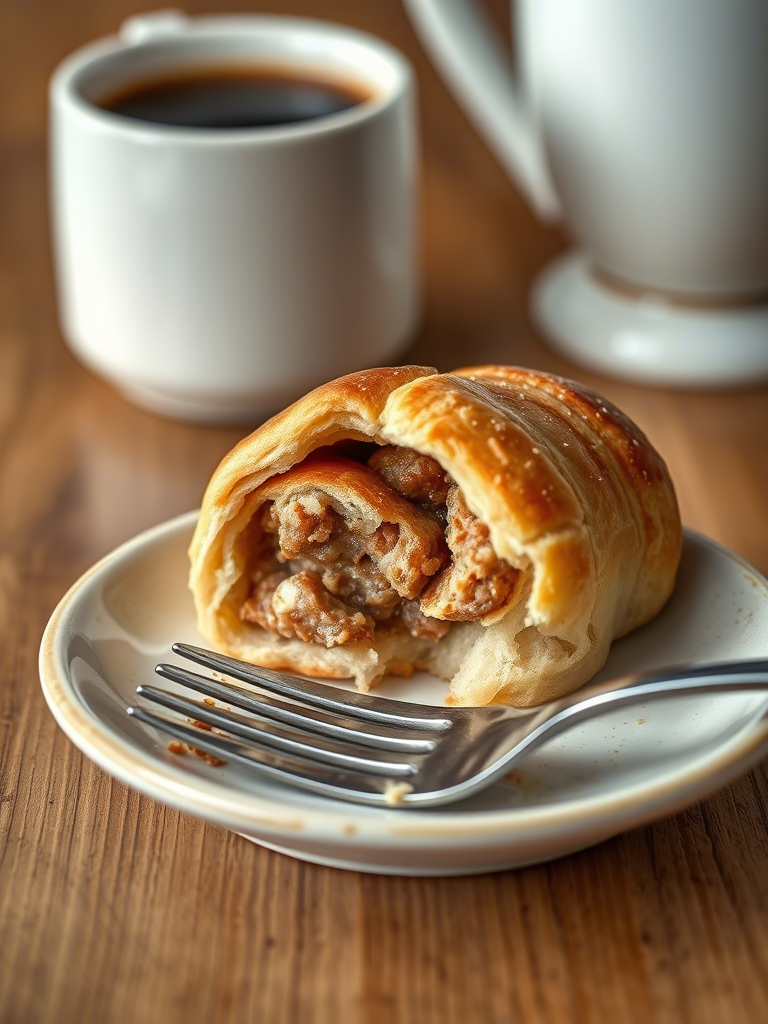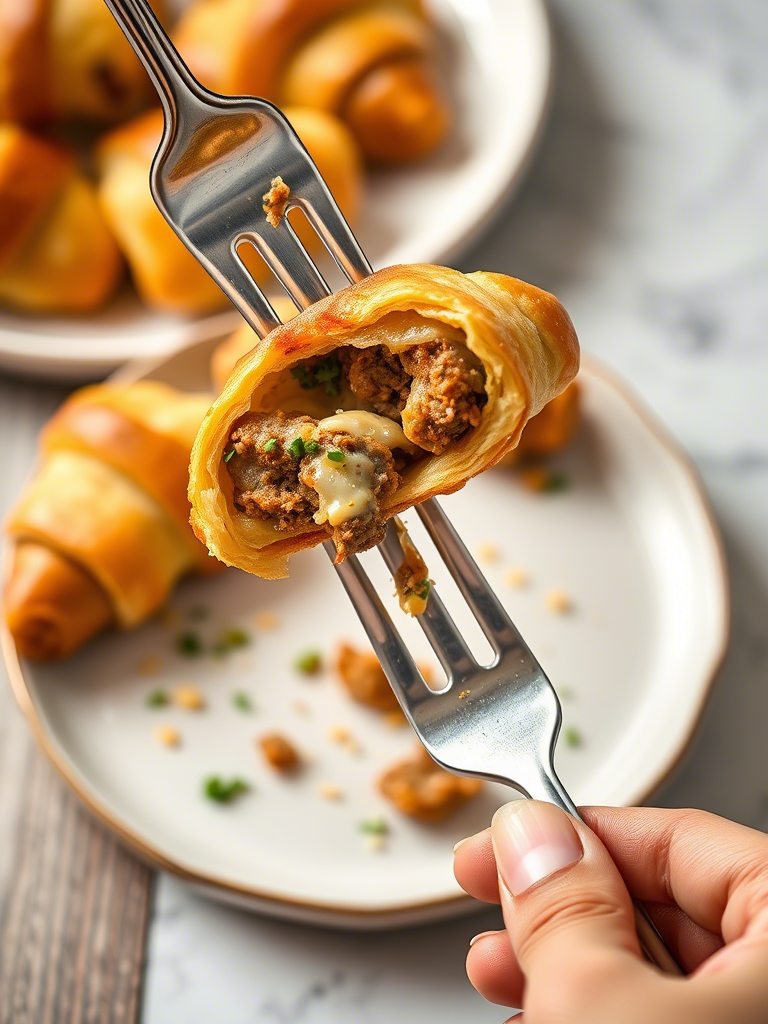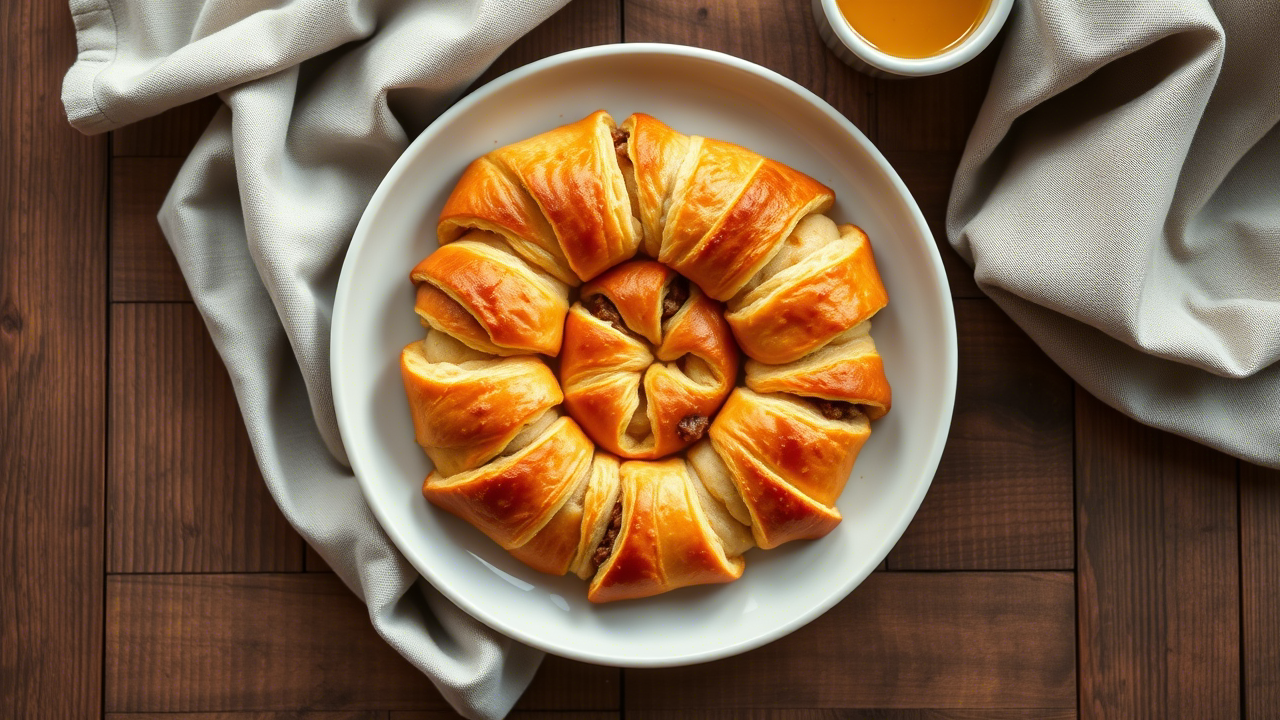If you think breakfast sausage crescent rolls are just something moms toss together with leftover dough and a prayer—think again. There’s an art to this deceptively simple dish, a layering of flavor, fat, and finesse that turns morning mediocrity into a buttery, flaky, sausage-stuffed revelation. And if you’re in the food game—restaurant, bakery, food truck, or test kitchen—you’ve got no excuse for making this classic taste like a drive-thru throwaway. This article dives deep into the real power and potential behind breakfast sausage crescent rolls. Not the boxed kind. The real deal.
So why should professionals care? Because this dish has range. It sells. It freezes well. It plates beautifully. And when executed properly, it tastes like you meant it.
The Anatomy of a Perfect Crescent Roll (And Why It Matters)
Crescent rolls are more than crescent-shaped bread. The dough’s architecture is everything. Laminated layers. A precise fat-to-flour ratio. And the kind of rise that feels like it’s lifting off the sheet tray. Commercial crescent doughs are fine for volume kitchens or big box breakfast setups. But for chefs? Bakers? Culinary teams looking to impress? You need better.
Now, if you’re using pre-made dough (we’re not judging—just observing), look at the ingredient list. Most mass-market doughs are loaded with hydrogenated oils, preservatives, and gums. You can taste it. You will taste it. Opt for a clean-label dough or, better yet, make it in-house. The return on flavor is, frankly, stupid good.
Sausage: The Star You’re Probably Undercooking
Let’s talk sausage. Not all pork is created equal, and what you wrap in your crescent roll determines if someone comes back for another. Fat content should hover around 25-30%. Any leaner and it dries out during baking. Too fatty, and it’ll puddle and split the dough. Ideally, you want bulk breakfast sausage seasoned with sage, thyme, a little crushed red pepper, maybe fennel. You’re looking for balance. Too sweet and it clashes with buttery pastry. Too spicy and the flavor overtakes everything else.
Here’s a little trick most pros overlook: pre-cook your sausage until just barely browned, not fully done. Why? Because it’ll finish in the oven. Overcooked sausage loses juiciness and ends up tasting like meat erasers. Sorry, but that’s the truth.
Cheese: Optional? Maybe. Strategic? Always.
This is where things get wild. Some folks toss in shredded cheddar like they’re topping nachos. Wrong move. If you’re going to use cheese, use it with intent. Cream cheese brings that luscious tang and creates a creamy binder. Gruyère adds complexity. Sharp cheddar gives you pull and punch. But pick one, not five. And layer it in. Don’t dump and wrap. That creates weird melt pockets and uneven texture.
And please—never use pre-shredded cheese. That anti-caking agent? It’s a silent killer of flavor and texture.
Seasoning: Don’t Let the Dough Do All the Talking
A crescent roll is a blank canvas. Don’t rely on it to do the heavy lifting. Season the filling. Add a pinch of garlic powder, onion powder, cracked black pepper—just a whisper of something that makes the bite memorable. For a signature twist, fold in caramelized onions or a touch of maple syrup into the sausage mix. Not a lot. Just enough to leave folks wondering, what is that?
A pro-level upgrade? Brush the inside of the dough with a thin swipe of Dijon mustard before adding the filling. The acidity cuts the richness and punches up the savory factor.

Folding & Assembly: It’s All in the Hands
This isn’t origami, but it is delicate. Don’t overfill. That’s the rookie mistake. You want a nice 1:1.5 ratio of filling to dough. Enough to taste it, not enough to cause leakage.
And here’s where most kitchens blow it: temperature control. Keep that dough cold. If it warms up while you’re working, the fat starts to melt, and your structure’s gone before you even hit the oven.
Roll tightly, pinch the seams, and place seam-side down on a parchment-lined sheet. Give it space—these babies puff.
Baking Like You Mean It
375°F is the sweet spot for most crescent rolls. But if you’re using from-scratch laminated dough, you may need to go lower and longer—around 350°F for 18–20 minutes. Watch for that deep golden brown, not tan. Not blonde. Brown. Anything less and you’ll have raw layers inside.
Pro tip? An egg wash with a splash of heavy cream gives you color and shine that screams, “Yeah, this was made by someone who gives a damn.”
Want a crunch finish? Sprinkle with flaky salt or sesame seeds right after brushing with egg wash.
Real-World Uses: Beyond Brunch Buffets
Here’s why these rolls deserve a place in your rotation: they sell. You can freeze them unbaked and bake-to-order. Perfect for cafes, breakfast counters, even catering gigs.
Want to add value? Pair ‘em with house-made dipping sauces. Think: maple Dijon, chipotle aioli, honey butter. Elevate the experience without upping food costs dramatically.
Restaurants can run them as brunch starters or bar bites. I’ve seen upscale kitchens serve them sliced on a charcuterie brunch board next to soft scrambled eggs and chutney. They flew off the board faster than the artisan cured meats. Real talk.
Food trucks? Wrap them in foil and serve hot on-the-go. Minimal mess. Max flavor. And margins? Beautiful.
Emerging Trends: Sweet Meets Savory
What’s hot right now? Sweet-savory mashups. Think sausage rolls with a touch of cinnamon in the dough. Or a bourbon-maple glaze brushed on top post-bake. The culinary scene’s leaning into comfort food with complex flavor profiles, and these rolls hit that sweet spot.
Plant-based versions are gaining traction too. Brands like Beyond and Impossible have solid breakfast sausages that hold up well in crescent dough. Just watch the fat content—it’s tricky with meat alternatives. You may need to add a touch of oil for that juicy mouthfeel.
Nutrition & Macros: When the Numbers Matter
Let’s get nerdy. One traditional sausage crescent roll can run between 230–310 calories, depending on size and add-ins. Protein sits at 8–10 grams. Fat around 16g, and carbs around 15–20g. That’s not terrible for a portable meal item.
For health-conscious diners, consider swapping to whole wheat dough or using turkey sausage. Not glamorous, but it widens your customer base without tanking flavor if done right.
Want to go leaner? Reduce the cheese, bump up herbs, and use thinner dough layers. Texture will shift slightly, but it’ll still deliver.
Storage & Shelf Life: Know Your Limits
Unbaked rolls can be prepped and frozen for up to 2 months. Always freeze on a tray before transferring to a zip bag—prevents clumping. Bake straight from frozen, just add 4–5 minutes to the total time.
Cooked rolls? They’re best within 48 hours. Reheat in a toaster oven or air fryer to preserve flake and crunch. Microwave? Only if you hate joy.

Common Missteps (And How Pros Fix ‘Em)
- Grease puddles on pan? Sausage too fatty or overfilled.
- Split seams? Dough too warm, not sealed right.
- Pale tops? No egg wash or oven temp too low.
- Raw centers? Rolls too thick or underbaked.
Little things matter here. This isn’t just some Pinterest snack hack. It’s a legitimate, scalable menu item that deserves real technique and attention.
Final Thoughts: From Quick Fix to Culinary Hero
Breakfast sausage crescent rolls don’t need a rebrand. They just need better hands. Better ingredients. And a little more imagination.
Whether you’re running a Michelin-adjacent brunch program or slinging hot eats from a mobile window, this dish belongs in your rotation. Because when it’s made right—really right—it’s not just breakfast. It’s a damn statement.
So next time you roll one up, don’t just think easy. Think: this is my signature.
Now go fold something worth remembering.
FAQs
What kind of sausage works best for breakfast crescent rolls?
Use high-quality bulk breakfast sausage with around 25–30% fat for juiciness and flavor.
Can I make breakfast sausage crescent rolls ahead of time?
Yes, you can freeze them unbaked for up to 2 months or store baked ones for 48 hours.
Is it okay to use store-bought crescent dough?
Yes, but opt for clean-label or higher-end versions without too many preservatives.
How do I prevent the crescent rolls from getting soggy?
Pre-cook the sausage slightly and don’t overfill or use cheese that melts excessively.
What cheese is best for these rolls?
Cream cheese, Gruyère, or sharp cheddar work well—just don’t overload it.
What’s the ideal oven temperature for baking?
Bake at 375°F for pre-made dough or 350°F for homemade to ensure even browning.
How can I elevate the flavor of the rolls?
Add a swipe of Dijon, caramelized onions, or a hint of maple to the filling.
Are there plant-based options for this recipe?
Yes, plant-based sausages like Beyond work well—adjust fat content if needed.
How do I keep the dough from tearing?
Keep it cold while working and don’t stretch it too thin or over-stuff it.
Can these rolls be used in professional food settings?
Absolutely—they freeze, reheat, and plate well for cafes, catering, or food trucks.

Mariana is a passionate home cook who creates delicious, easy-to-follow recipes for busy people. From energizing breakfasts to satisfying dinners and indulgent desserts, her dishes are designed to fuel both your body and hustle.
When she’s not in the kitchen, she’s exploring new flavors and dreaming up her next recipe to share with the Foodie Hustle community.

